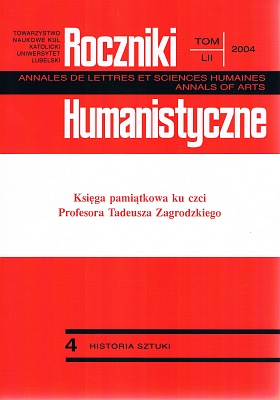The Gothic Pietà in Łaszew near Wieluń
Abstract
The area around Wieluń, to which Łaszew belongs, compared to other lands in Wielkopolska (Great Poland), is rich in Gothic sculpture. It results from the favorable situation of this place. It is here that important commercial and communications routes met. In the Middle Ages the Wieluń area connected Western Małopolska (Little Poland) to Wielkopolska and to Gdańsk Pomerania, and the Sandomierz region and Mazovia to Silesia. Through frequent contacts with Silesia various cultural trends easily reached the Wieluń area; including the ones that came to us from Czech and German lands via Silesia. At that time Wieluń belonged to the leading average-sized towns in Poland. There were about ten various guilds there, probably including a woodcarvers' guild. However, most sculptures and paintings of that time originated in the nearby Silesia, an active Gothic art center. Within the Wieluń district there are about twenty Gothic sculptures and paintings, and among them one of the most beautiful sculptures, the Pietà in Łaszew. The works are not very well described in history of art; they are only mentioned in catalogues of old works of art in the Wieluń area.
The Pietà in Łaszew does not have a sculpture that would correspond to it in the Wieluń area. In that region it is the only example of presentation of Virgin Mary Dolorous with the dead body of Christ on her knees that was so popular in the Middle Ages. A formal and ideological analysis points to the period around 1430 as the time when it was sculpted. However, it is difficult to state unambiguously from which workshop it originated. The thesis seems probable that it came from the nearby Silesia, although remembering how active Wieluń was in the 15th century, one cannot rule out the possibility that it was sculpted in that town itself.
Copyright (c) 2004 Roczniki Humanistyczne

This work is licensed under a Creative Commons Attribution-NonCommercial-NoDerivatives 4.0 International License.





